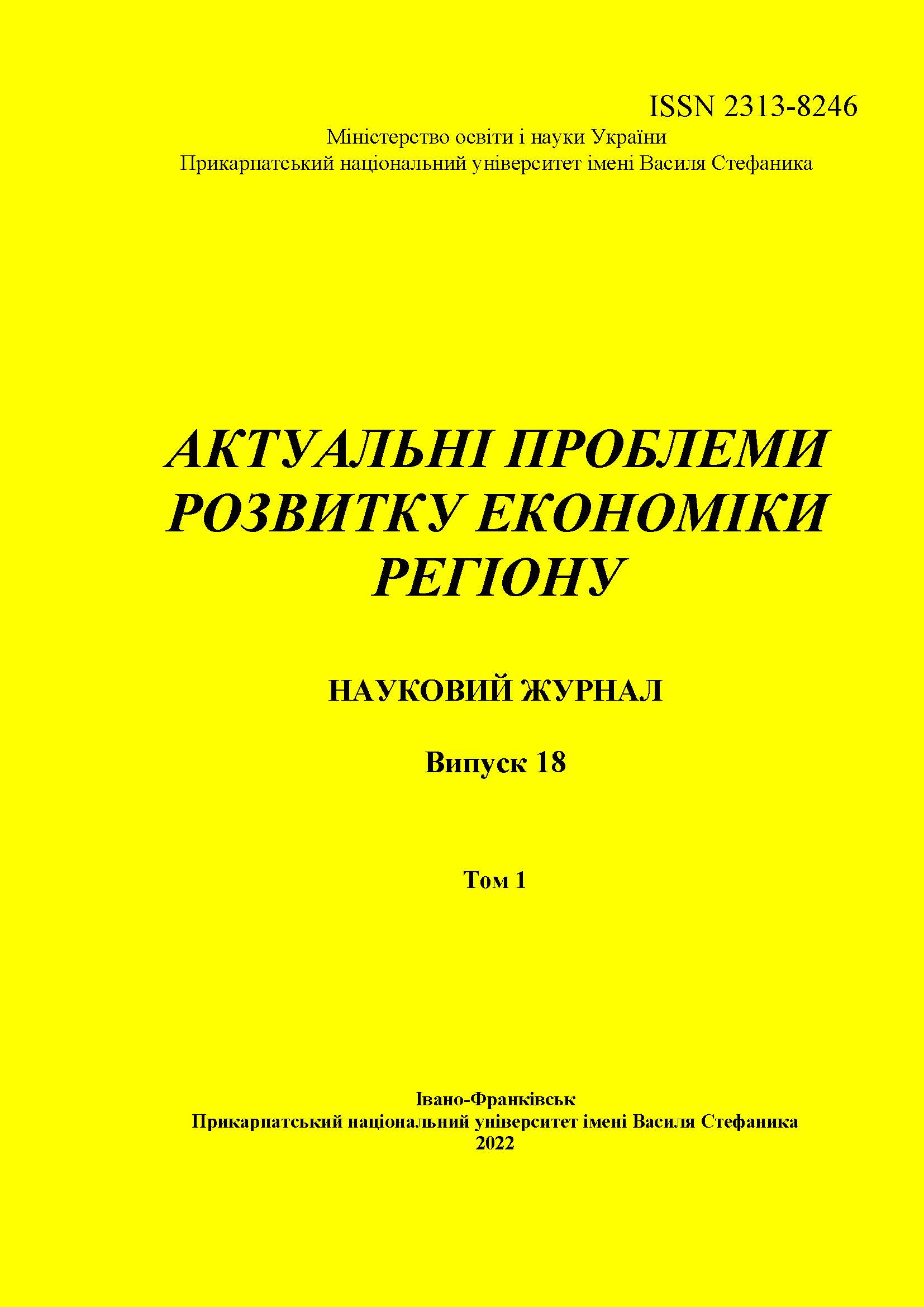OVERVIEW OF THE MODERN WORLD ENERGY MARKET
DOI:
https://doi.org/10.15330/apred.1.18.186-199Keywords:
hydrocarbons, oil, gas, electricity production, energy sources, greenhouse gases, energy marketAbstract
With the beginning of the industrial age, the ability to use different types of energy has changed the living conditions of billions of people, allowing them to enjoy an unprecedented level of comfort and mobility. The need for a profound transformation of the world's energy infrastructure is widely recognized due to growing concerns about global climate change. The article considers the main trends in the global energy market, typical for the end of 2021 - early 2022, identifies countries with the best energy balance and describes the process of transition to a low-carbon energy system.
A special place in the article is occupied by the distribution of energy sources by differentiating their characteristics and changing approaches to their value, use in the world and a certain time range, summarizes the main trends in each fuel.
In recent years, the steady increase in energy consumption has been closely linked to the growth of prosperity and economic opportunities in much of the world. However, at this stage of human existence there is a huge energy problem. This challenge has at least two critical dimensions. Predominant dependence on fossil fuels, in particular, threatens to change the Earth's climate to such an extent that it can have serious consequences for the integrity of both natural systems and vital human systems. At the same time, much of the world's population still does not have access to one or more basic energy and related services, such as clean fuel for cooking and transportation.
In addition, this article describes the prospects for the development of major energy markets and technological trends, as well as describes the impact of international energy markets on macroeconomic indicators. Based on their research, scenarios for the development of hydrocarbon companies in the process of energy transition of the world economy to a low-carbon energy system are outlined.
References
2. Lishchuk , V. I., Lishchuk, M. Ye., and A. T.Moskovchuk. “Vykorystannia vidnovliuvanykh resursiv v enerhetytsi: svitovi stratehii ta stsenarii rozvytku enerhetychnoho rynku.” Ekonomichnyi forum, no. 2, 2017, pp. 30-35.
3. Maistro, S.V., and O.L.Voloshyn. “Kontseptualni zasady stratehii derzhavnoho rehuliuvannia ta perspektyvy rozvytku alternatyvnoi enerhetyky v Ukraini.” Teoriia ta praktyka derzhavnoho upravlinnia: zb. nauk. pr, no. 3 (50), 2015, pp . 133—140.
4. Markevych, K., and V.Omelchenko. Hlobalni enerhetychni trendy kriz pryzmu natsionalnykh interesiv Ukrainy. Kyiv, Zapovit, 2016.
5. Stuchynska, N.P. “Enerhetychna bezpeka Ukrainy: sutnist i mozhlyvosti realizatsii.” Investytsii: praktyka ta dosvid, no. 9, 2016, pp. 104–108.
6. Barna, S., and Ya.Shpak. “The current state of the energy market and monitoring of key issues in the innovation management system.” Development Management, no.18(2), 2020, pp. 9-22. doi:10.21511/dm.18(2).2020.02.
7. Cavallaro, C., Pearce, J., & R.Sidortsov. “Decarbonizing the boardroom? Aligning electric utility executive compensation with climate change incentives.” Energy Research and Social Science, no.37, 2017. doi.org/10.1016/j. erss.2017.09.036.
8. “Energy: Development news, research, data” World Bank Group, data.worldbank.org/topic/energy-and-mining. Accessed 2 May 2022.
9. Global Energy Statistical Yearbook 2020, yearbook.enerdata.net/total-energy/worldenergy-intensity-gdp-data.html. Accessed 2 May 2022.
10. Ikhlaas, Gurrib.“The relationship between the Nasdaq Composite Index and energy futures markets.” Investment Management and Financial Innovations, no.15(4), 2018, pp. 1-16. doi:10.21511/imfi.15(4).2018.01
11. Jamaliah, Abdul-Majid. “Board ethnic diversity and goodwill impairment decisions: longitudinal analysis of energy firms in Malaysia.” Problems and Perspectives in Management, 18(1), 2020, pp. 326-333. doi:10.21511/ppm.18(1).2020.28
12. Khvostenko, V., Memmedli, M., and S. Milevskyi. “The role of Kazakhstans oil policy in foreign policy.” Development Management, no.17(4), 2019, pp.55-63. doi:10.21511/dm.17(4).2019.05
13. Kurbatova, T., Sidortsov, R., Sotnyk, I., Telizhenko, O., Skibina, T., and H. Roubík. “Gain without pain: an international case for a tradable green certificates system to foster renewable energy development in Ukraine.” Problems and Perspectives in Management, 17(3), 2019, pp.464- 476. doi:10.21511/ppm.17(3).2019.37
14. Marzouk, O. A., & A. A.Mahrous. “Sustainable consumption behavior of energy and waterefficient products in a resourceconstrained environment.” Journal of Global Marketing, no. 33(5), 2020, pp. 335- 353. https://doi.org/10.1080/08911 762.2019.1709005.
15. National Commission for State Regulation of Energy and Public Utilities. Report on the results NCSREPU activity in 2018. Decree No. 440, 29.03.2019, www.nerc.gov.ua/data/filearch/Catalog3/Richnyi_zvit_NKREKP_2018.pdf. Accessed 2 May 2022.
16. Papież, M., Śmiech, S., & K. Frodyma. “Determinants of renewable energy development in the EU countries. A 20-year perspective.” Renewable and Sustainable Energy Reviews,no. 91, 2018, pp. 918-934. doi.org/10.1016/j. rser.2018.04.075.
17. Jiang, Songyu, and Ruihui Pu. “Reconceptualizing and modeling sustainable consumption behavior: A synthesis of qualitative evidence from online education industry.” Innovative Marketing, no.17(3), 2021, pp.144-156. doi:10.21511/im.17(3).2021.12
18. Statistical Review of World Energy. BP, www.bp.com/en/global/corporate/who-we-are.html. Accessed 2 May 2022.
19. World Energy Outlook 2021 - International Energy Agency, www.iea.org/reports/world-energy-outlook-2021. Accessed 2 May 2022.
Downloads
Published
How to Cite
Issue
Section
License
- Authors retain copyright and grant the journal right of first publication with the work simultaneously licensed under a Creative Commons Attribution NonCommercial NoDerivs 4.0 Unported License that allows others to share the work with an acknowledgement of the work's authorship and initial publication in this journal.
- Authors are able to enter into separate, additional contractual arrangements for the non-exclusive distribution of the journal's published version of the work (e.g., post it to an institutional repository or publish it in a book), with an acknowledgement of its initial publication in this journal.
- Authors are permitted and encouraged to post their work online (e.g., in institutional repositories or on their website) prior to and during the submission process, as it can lead to productive exchanges, as well as earlier and greater citation of published work (See The Effect of Open Access)


